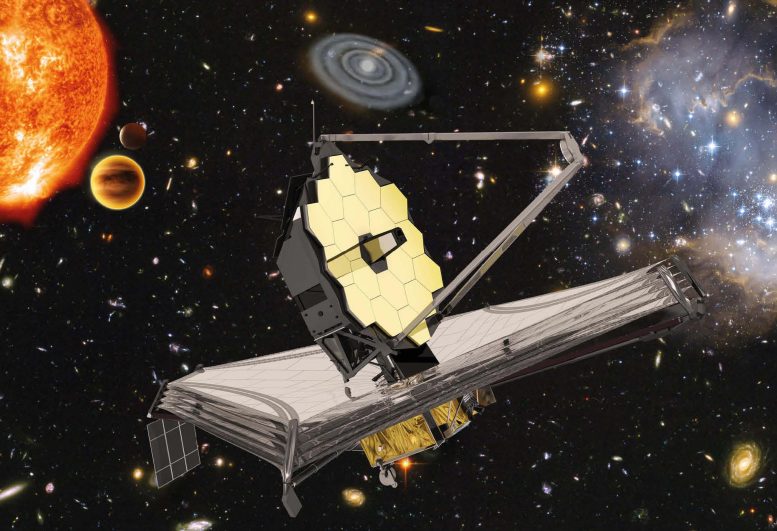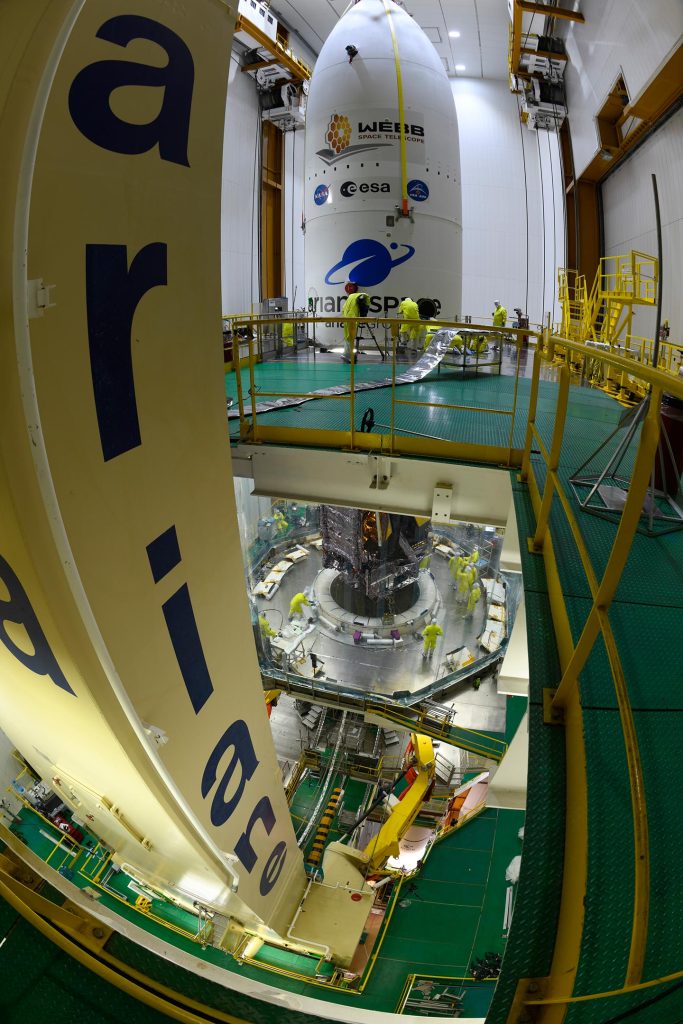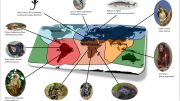
Artist’s impression of the NASA/ESA/CSA James Webb Space Telescope. Credit: ESA, NASA, S. Beckwith (STScI) and the HUDF Team, Northrop Grumman Aerospace Systems / STScI / ATG medialab
The James Webb Space Telescope is confirmed for the target launch date of December 24, at 7:20 a.m. EST.
Late on December 17, teams at the launch site successfully completed encapsulation of the observatory inside the Ariane 5 rocket that will launch it to space. Webb’s final launch readiness review will be held on Tuesday, December 21 and, if successful, roll-out is planned for Wednesday, December 22.
NASA’s James Webb Space Telescope is the successor to the Hubble Space Telescope, the most powerful infrared science observatory ever to be sent into space. From its orbit nearly a million miles from Earth, Webb will study some of the most distant objects in the universe—but first it has to get there. Webb will be folded up inside the rocket that launches it into space, gradually unfurling as it travels to its destination beyond the Moon. This video depicts Webb’s journey into orbit, capturing its travel time, distance, and its transformation as it deploys.
Revealing the Hidden Universe

Late on December 17, teams at the launch site successfully completed encapsulation of the observatory inside the Ariane 5 rocket that will launch it to space. Webb’s launch final readiness review will be held on Tuesday, December 21, and, if successful, roll-out is planned for Wednesday, December 22. Credit: ESA-Manuel Pedoussaut
The James Webb Space Telescope joins a great legacy of space-based astronomy. NASA’s space telescope missions have revolutionized our understanding of the universe and our place within it. Webb has the high resolution of the Hubble Space Telescope and the ability to detect light wavelengths into the mid-infrared range, like the Spitzer Space Telescope. Webb’s infrared-detecting technology will reveal the hidden universe to our eyes: stars shrouded in clouds of dust, water in the atmospheres of other worlds, and the first light from the earliest galaxies ever formed.
The science that will be done using the Webb telescope will bring us closer to NASA’s overarching science goals of discovering secrets of the universe and searching for life beyond Earth.
The James Webb Space Telescope is the largest, most powerful, and most technologically challenging space telescope ever built.
The Webb Telescope is so large; it must be folded like origami to fit inside its rocket fairing for the ride into space. Once in space, unfolding and readying Webb for science is a complex process that will take about six months.
Webb is designed to see the most distant galaxies in the Universe and study how galaxies evolved over cosmic time. Webb will study planets orbiting other stars looking for the chemical signatures of the building blocks of life. Webb will also study planets within our own solar system.
The Webb Telescope Mission is an international space telescope program led by NASA with its partners, the European Space Agency and the Canadian Space Agency.









Be the first to comment on "NASA’s Webb Space Telescope Confirmed for December 24 Launch"